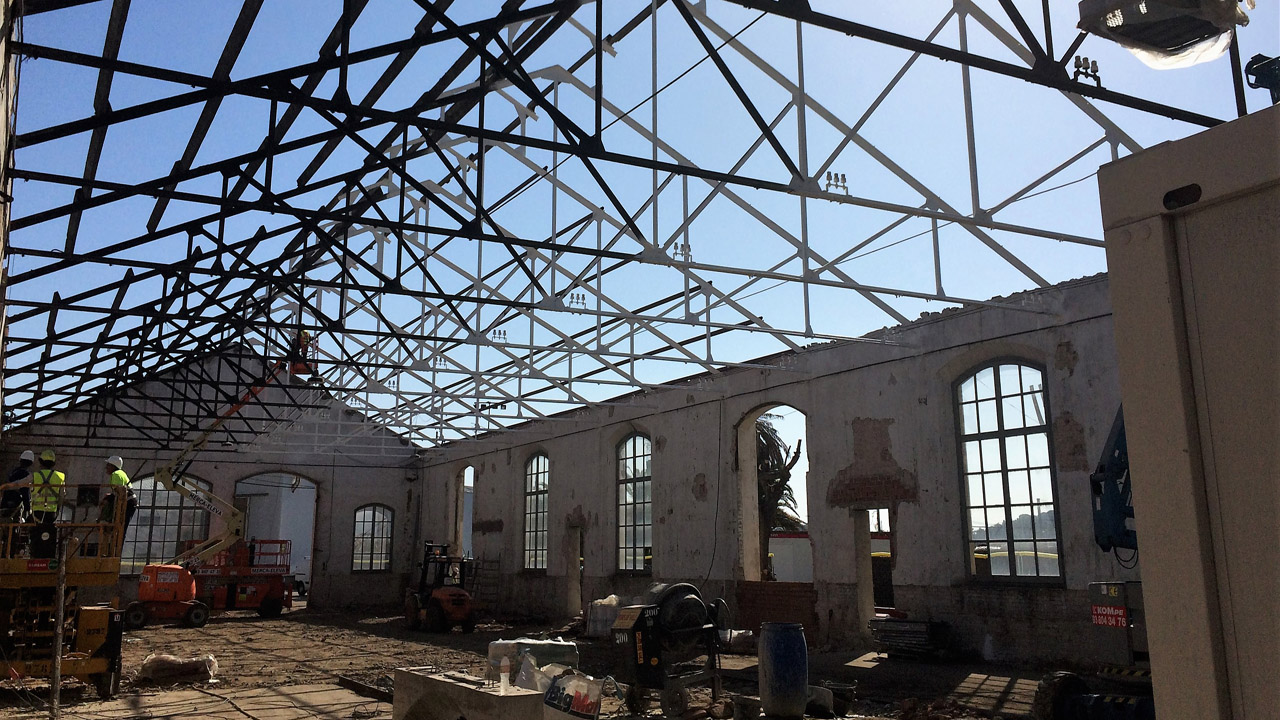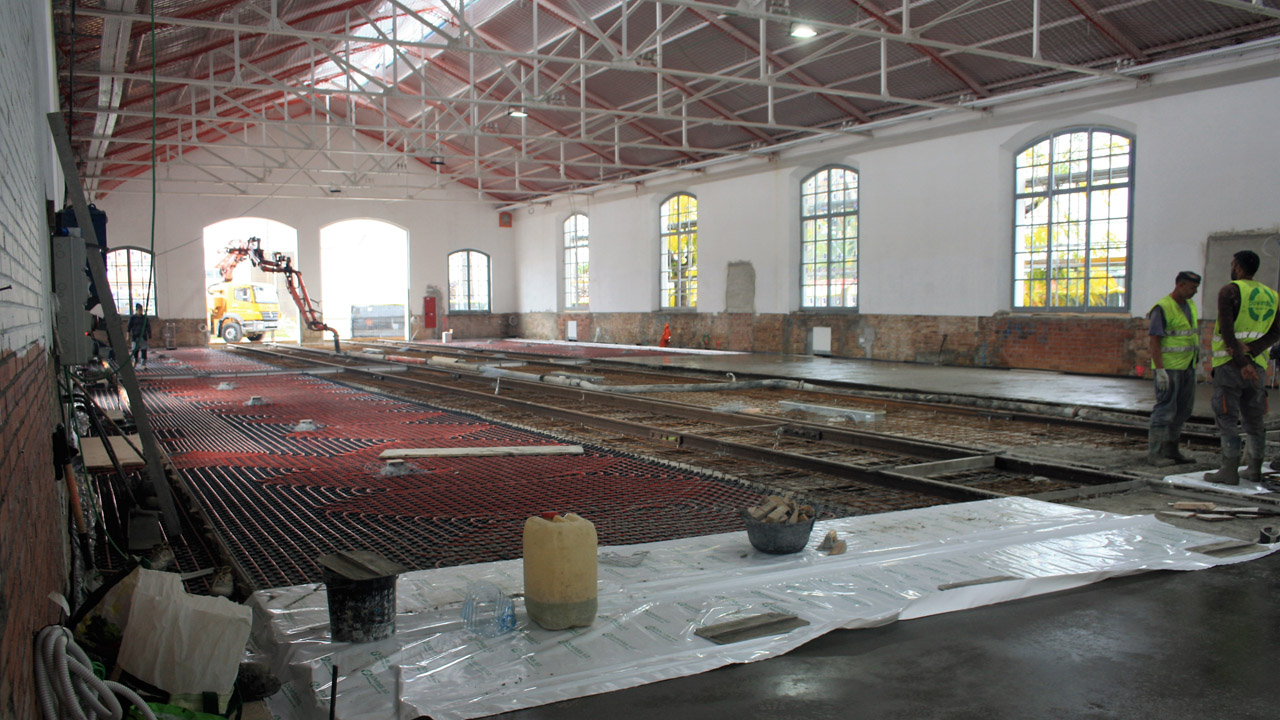
Interior OF THE Gran NaVE, 70S

Detail of repair shops in operation, 50s

Detail of repair shops in operation, 50s

Interior of the Gran Nave, start 2000s

Start of rehabilitation works, 2018

Rehabilitation works, 2018

Installation of new railway tracks in the Gran Nave, 2018

Rehabilitation works, 2018
7 - The Ships of the old repair shops
On this trip along the arteries of the old Steam Depot,
we can see to the right of the “Swing Bridge” a series of
industrial railway buildings. Two of them are the oldest
buildings in all of the present-day Museum’s installations:
the long, transversal Gran Nave, which is crowned by a
smaller horizon called the Puente-Grúa (Bridge Crane)
building. They were built for the arrival of the railway in
the city in 1881, along with the station of Vilanova i la
Geltrú.
The Gran Nave was completely refurbished in 2018-2019, with
money from the Ministry of Transport’s 1.5% cultural fund,
and the Puente-Grúa (Bridge Crane) building in 2020. The
latter features an impressive bridge crane, built in Great
Britain, that is capable of lifting 40 tons; this makes it
possible to raise 19th-century boilers and locomotives and
place them on one of its six tracks with a pit, in order to
carry out any necessary work. It took up to ten workers on
either side to move it. It was restored in 2020 in order to
keep it working.
In relation to the Gran Nave, it has two central tracks, one
of which has a third rail, which will enable a high-speed
vehicle to be brought here in the future. In 2021, it is
planned that its interior will feature modern museology in
order to experience and discover the railway’s innovative
role throughout history. Originally, its two tracks enabled
vehicles to be moved from the workshop to the general
railway network.
One of its tracks displays a composition of the first
“Talgo” train called “Talgo II.” Built in the United States
in the 1940s by the Spanish company Patentes Talgo, these
vehicles introduced concepts such as modernity, design and
comfort to railway transport in post-war Spain. The train’s
technology was highly innovative for that time and its final
objective was passenger comfort. It was made up of
lightweight articulate vehicles, with a low centre of
gravity and independent wheels. It featured reclining seats,
in-seat meals service, platform-level doors, panoramic
windows, air conditioning and an observation car. Its
appearance revolutionised the conditions of railway travel.
When the “Talgo II” entered service in 1950, most trains
still functioned with steam locomotives and wooden cars.


